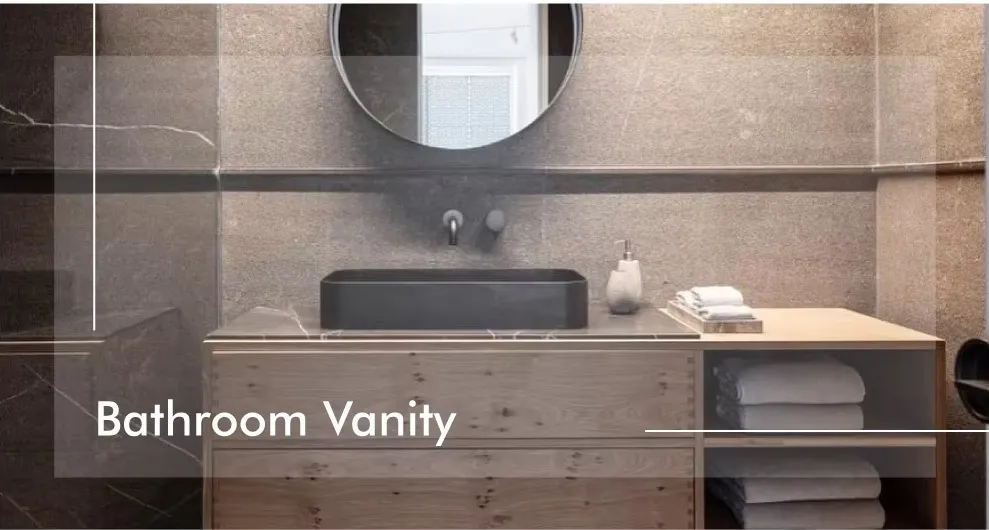Ever stopped to wonder what your bathroom vanity is made of? Probably not—until a spill soaks into the countertop and starts growing mold, or a curious kid decides to chew on the edge (we've all been there). The materials used in your vanity don't just affect how it looks; they directly impact your family's health and safety. Let's break down the must-haves:
Fire Resistance and Low Toxicity
Bathrooms might not be the first place you think of for fire risks, but with hair dryers, curling irons, and electric shavers plugged in daily, sparks happen. A vanity with fire-resistant materials adds an extra layer of protection. Look for options treated with non-toxic flame retardants—no one wants harmful fumes filling the air if something goes wrong. Reputable providers often prioritize materials that meet strict safety standards, ensuring that even in the unlikely event of a fire, the damage is contained.
Waterproof and Mold-Resistant
Moisture is the bathroom's middle name, and mold loves nothing more than a damp vanity cabinet. Particleboard or untreated wood might look nice, but they'll warp and breed mold in months. Instead, opt for materials like marine-grade plywood, PVC, or solid surface countertops. These resist water absorption, so even if you splash water while washing your face or forget to dry the sink edge, you won't end up with a moldy mess that triggers allergies or respiratory issues.
| Material Type | Water Resistance | Mold Resistance | Toxicity Level | Best For |
|---|---|---|---|---|
| Solid Surface (e.g., Corian) | Excellent | High | Low (non-porous, no VOCs) | Families with allergies |
| PVC Laminate | Very Good | High | Low (sealed edges prevent off-gassing) | Budget-friendly, high-moisture bathrooms |
| Untreated Wood | Poor | Low | Medium (may contain formaldehyde glues) | Not recommended for bathrooms |
| Marine-Grade Plywood | Good | Medium | Low (if sealed properly) | Custom builds with proper sealing |
Antimicrobial Properties
Let's talk about germs. Your vanity countertop is a breeding ground for bacteria—think toothpaste splatters, wet toothbrushes, and the occasional spill of who-knows-what. Some modern materials come with built-in antimicrobial treatments that inhibit the growth of bacteria like E. coli and Staphylococcus. This isn't just about cleanliness; it's about preventing the spread of colds, flus, and stomach bugs, especially in households with little ones who love to touch everything and then put their hands in their mouths.
When exploring options, don't hesitate to ask about material certifications. A trustworthy provider will be transparent about what goes into their products, whether it's GREENGUARD certification for low chemical emissions or third-party testing for antimicrobial effectiveness. After all, safety shouldn't be a guessing game.













